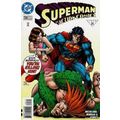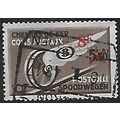Burford, Oxfordshire - High Street, old cars - nice 1960s Dixon postcard
- Condition : Used
- Dispatch : 2 Days
- Brand : None
- ID# : 140696295
- Quantity : 1 item
- Views : 187
- Location : United Kingdom

- Seller : justthebook (+1703)
- Barcode : None
- Start : Wed 01 Jul 2015 04:27:31 (EDT)
- Close : Run Until Sold
- Remain : Run Until Sold
Checks/Cheques
 for 1 item(s) edit
for 1 item(s) edit
Shipping Calculator
More Listings from This Seller view all
Seller's Description
- Postcard
- Picture / Image: The High Street, Burford, Oxfordshire - shows old late 1960s scene with cars
- Publisher: J Arthur Dixon (Costswolds 1738)
- Postally used: no
- Stamp: n/a
- Postmark(s): n/a
- Sent to: n/a
- Notes / condition: very good
Please ask if you need any other information and I will do the best I can to answer.
Image may be low res for illustrative purposes - if you need a higher definition image then please contact me and I may be able to send one. No cards have been trimmed (unless stated).
------------------------------------------------
Postage & Packing:
Postage and packing charge should be showing for your location (contact if not sure).
No additional charges for more than one postcard. You can buy as many postcards from me as you like and you will just pay the fee above once. Please wait for combined invoice. (If buying postcards with other things such as books, please contact or wait for invoice before paying).
Payment Methods:
UK - PayPal, Cheque (from UK bank) or postal order
Outside UK: PayPal ONLY (unless otherwise stated) please. NO non-UK currency checks or money orders (sorry).
NOTE: All postcards are sent in brand new stiffened envelopes which I have bought for the task. These are specially made to protect postcards and you may be able to re-use them. In addition there are other costs to sending so the above charge is not just for the stamp!
I will give a full refund if you are not fully satisfied with the postcard.
----------------------------------------------
Text from the free encyclopedia WIKIPEDIA may appear below to give a little background information (internal links may not work) :
*************
Burford /'b?rf?rd/ is a small town on the River Windrush in the Cotswold hills in west Oxfordshire, England, about 20 miles west of Oxford, 22 miles southeast of Cheltenham and only about 2 miles from the Gloucestershire boundary. The toponym derives from the Old English words burh meaning fortified town or hilltown and ford, the crossing of a river.
Burford Priory is a country house that stands on the site of a 13th-century Augustinian hospital. In the 1580s an Elizabethan house was built incorporating remnants of the priory hospital.[3] It was remodelled in Jacobean style, probably after 1637, when the estate had been bought by William Lenthall, Speaker of the House of Commons in the Long Parliament. The house and later the chapel were restored for the philanthropist Emslie John Horniman, M.P., after 1912 by the architect Walter Godfrey.[4]
From 1949 Burford Priory housed the Society of the Salutation of Our Lady, a community of Church of England nuns. In the 1980s, its numbers dwindled, so in 1987 it became a mixed community including Church of England Benedictine monks. In 2008 the community sold the property and it has now returned to being a private house.[5]
The town began in the middle Anglo-Saxon period with the founding of a village near the site of the modern priory building. This settlement continued in use until just after the Norman conquest of England when the new town of Burford was built. On the site of the old village a hospital was founded which remained open until the Dissolution of the Monasteries by King Henry VIII. The modern priory building was constructed some 40 years later around 1580.
In 1649, the church was used as a prison (during the Civil War),[6] when the New Model Army Banbury mutineers were held there. Some of the 340 prisoners left carvings and graffiti, which still survive in the church.
Between the 14th and 17th centuries Burford was important for its wool.[citation needed] The Tolsey, midway along Burford's High Street, was once the centre of the local wool trade, and is now a museum.
The town centre has some 15th-century houses and the Baroque town house that is now Burford Methodist Church. Its most notable building is the Church of England parish church of Saint John the Baptist, which is known for its merchants' guild chapel, memorial to Henry VIII's barber-surgeon, Edmund Harman, featuring South American Indians and Kempe stained glass.
Burford has twice had a bell-foundry: one run by the Neale family in the 17th century and the other run by the Bond family in the 19th and 20th centuries.
Henry Neale was a bell-founder between 1627 and 1641 and also had a foundry at Somerford Keynes in Gloucestershire.[7] Edward Neale had joined him as a bell-founder at Burford by 1635 and continued the business until 1685.[7] Numerous Neale bells remain in use, including at St Britius, Brize Norton, St Mary's, Buscot, St James the Great, Fulbrook and SS Peter and Paul, Steeple Aston. A few Neale bells that are no longer rung are displayed in Burford parish church.
Henry Bond had a bell-foundry at Westcot from 1851 to 1861. He then moved it to Burford where he continued until 1905.[7] He was then succeeded by Thomas Bond, who continued bell-founding at Burford until 1947.[7] Bond bells still in use include four of the ring of six at St John the Evangelist, Taynton, one and a Sanctus bell at St Nicholas, Chadlington and one at St Peter's, Whatcote in Warwickshire.
For many years before the 7th century there had been strife between the Celtic Church and the Roman Catholic Church over the question ""When should Easter Day be kept?"" The Britons adhered to the rule laid at the Council of Arles in AD 314, that Easter Day should be the 14th day of the Paschal moon, even if the moon were on a Sunday. The Roman Church had decided that when the 14th day of the Paschal moon was a Sunday, Easter Day should be the Sunday after; Computus.
Various Synods were held in different parts of the kingdom with the object of settling this controversy, and one was held for this object at Burford in AD 685.[8] Monk deduces from the fact of the Synod being held at Burford, that the Britons in some numbers had settled in the town and neighbourhood. This Synod was attended by Æthelred, King of Mercia, and his nephew Berthwald (who had been granted the southern part of his uncle's kingdom); Theodore, Archbishop of Canterbury; Bosel, Bishop of Worcester; Seaxwulf, Bishop of Lichfield; Aldhelm, Abbot of Malmesbury; and many others.
Aldhelm was ordered at this conference to write a book against the error of the Britons in the observance of Easter. At this Synod Berthwald gave 40 cassates of land (a cassate is enough land to support a family) to Aldhelm who afterwards became Bishop of Shereborne. According to Spelman, the notes of the Synod were published in AD 705.
Malmesbury and other chroniclers record a battle between the West Saxons and Mercians at Burford in AD 752.[9] In the end Æthelhum, the Mercian standard-bearer who carried the flag with a golden dragon on it, was killed by the lance of his Saxon rival.[6] The Anglo-Saxon Chronicle records ""A.D 752. This year Cuthred, king of the West Saxons, in the 12th year of his reign, fought at Burford, against Æthelbald king of the Mercians, and put him to flight.""[6] The historian William Camden (1551–1623) wrote
""...in Saxon Beorgford [i.e. Burford], where Cuthred, king of the West Saxons, then tributary to the Mercians, not being able to endure any longer the cruelty and base exactions of King Æthelbald, met him in the open field with an army and beat him, taking his standard, which was a portraiture of a golden dragon.""[6]
The origin of the golden dragon standard is attributed to that of Uther Pendragon, the father of King Arthur of whom Geoffrey of Monmouth wrote:
[Uther Pendragon] ""...ordered two dragons to be fashioned in gold, in the likeness of the one which he had seen in the ray which shone from that star. As soon as the Dragons had been completed this with the most marvellous craftsmanship — he made a present of one of them to the congregation of the cathedral church of the see of Winchester. The second one he kept for himself, so that he could carry it around to his wars.""[10]
In the late 16th or early 17th century the people of Burford still celebrated the anniversary of the battle. Camden wrote: ""There has been a custom in the town of making a great dragon yearly, and carrying it up and down the streets in great jollity on St John's Eve"".[11] The field traditionally claimed to be that of the battle is still called Battle Edge.[6]
According to Reverend Francis Knollis' description of The Discovery, ""On 21 November 1814 a large freestone sarcophagus was discovered near Battle Edge 3 feet (0.91 m) below ground, weighing 16 long hundredweight (1,800 lb; 810 kg) with the feet pointing almost due south. The interior is 6 feet (1.8 m) long and 2 feet 2 inches (0.66 m) wide. It was found to contain the remains of a human body, with portions of a leather cuirass studded with metal nails.The skeleton was found in near perfect state due to the exclusion of air from the sarcophagus."" The coffin is now preserved in Burford churchyard, near the west gate.
Whose fame is in that dark green tomb? Four stones with their heads of moss stand there. They mark the narrow house of death. Some chief of fame is here! Raise the songs of old! Awake their memory in the tomb. — Ossian
type=printed
city/ region=burford
period=post-war (1945 - present)
postage condition=unposted
number of items=single
size=continental/ modern (150x100mm)
Listing Information
| Listing Type | Gallery Listing |
| Listing ID# | 140696295 |
| Start Time | Wed 01 Jul 2015 04:27:31 (EDT) |
| Close Time | Run Until Sold |
| Starting Bid | Fixed Price (no bidding) |
| Item Condition | Used |
| Bids | 0 |
| Views | 187 |
| Dispatch Time | 2 Days |
| Quantity | 1 |
| Location | United Kingdom |
| Auto Extend | No |

















